Every Wednesday night the Chicago Beauty Bar hosts a party called Mainframe that flies under the banner of an internet movement known as seapunk. If one were to walk by the venue, located a stone’s throw from the city’s Blue Line Chicago stop, he or she might encounter a rogue group of oddly familiar cigarette smokers with brightly colored blue hair, holographic sunglasses and darkly shaded lipstick—not too far off from the regular oddities of Chicago’s nocturnal scene.
I find myself at one of the Mainframe events in order to gauge the pulse of the seapunk trend, which started almost two years ago on the web but only recently slipped into mainstream culture through stars like Rihanna and Azealia Banks in November. 
Mainframe is the product of the progenitors of seapunk, two members of a larger Chicago nightlife group that have arranged a new trifecta of monthly and weekly parties including Mainframe, Jennifer Ashley and Total Therapy. What began as two people with blue hair tweeting seapunk hashtags with four other Twitter users quickly spiraled into an uncontrollable yet seemingly lucrative internet subculture complete with graphic, aesthetic and musical elements. Now, seapunk has found its way to Chicago and melded into the fabric of a burgeoning form of internet celebrity.
The Beauty Bar is mostly pink and turquoise with ornate miniature chandeliers hanging from the ceiling in the bar room and dryer chairs lining the wall opposite the bar for guests to seat themselves. Beaste shmoozes while Redwine mixes tracks in the DJ booth, conjuring an electronic symphony of booming bass overlaid in the occasional trancey ambience. Beaste says she likes the venue because it’s cute.
A few guys breakdance in the back room under a revolving disco ball casting a decadent speckled magenta glow while an expressly punk bartender with long brown hair, a denim jacket and an upturned billed cap serves drinks behind the counter. The punk element is present. The color blue is present. But the oceanography is absent, with the exception of the seapunks and an odd group of men dressed like pirates and ship captains. Beaste, seemingly a bit disconcerted by the seafarers’ presence, reassures me that they have nothing to do with seapunk, that she thinks “it’s a birthday party or something.”
I sit down with Beaste and a group of her close friends, mostly young women and gay men with an edgy style, an obvious affinity for black beanies, and perhaps the occasional studs with a splash of hair dye. Beaste wears patterned leggings covered in esoteric symbolism and a sweater depicting Charles Manson with a third eye and an inner fourth eye stitched on top of it, drilling away through barriers of perception. As I sit talking to Beaste and her friends about a wide array of topics including cats, Astrology, girl problems and Marilyn Manson, the bartender brings us a free round of drinks. “Thanks guys,” he says graciously as he makes his way back to the bar. “They’re so nice to us here,” says Beaste.
The Mainframe party fliers tout the seapunk hashtag and make the party seem as if it is intended to be a seapunk event. However, despite the hashtag’s popularity on the internet and the Tumblr following it appears to galvanize, Beaste and Redwine preside over what seems like a lonely seapunk realm in the real world. “Really it’s just us,” says Beaste.
The hashtag first found traction on Twitter in June of 2011 when a Twitter user named Lilinternet tweeted, “Seapunk leather jacket with barnacles where the studs used to be,” which was followed up with a response from another user known as Lilgovernment, who said, “Let’s make sandcrassles #seapunk.” Shortly thereafter Twitter users Zombelle_ and Ultrademon—two names in a series of internet aliases for Beaste and Redwine—hopped on the digital wave and with the help of two others, Ttteams and Unicornkid, used Twitter to launch the ambiguous idea of seapunk monumentally.
To put it simply, the trend was dismissed as an ephemerally vapid joke by most of its proponents. “As soon as you name something the death clock starts ticking, which is why I try not to be involved in a particular thing,” said Lilinternet in an interview for Weird Vibes.
After the dust cleared the only ones who remained were Beaste and Redwine. The hashtag found prominence on websites like Tumblr even after the original architects disavowed it, and Redwine even made an exclusive Facebook group and a “Seapunk” page— currently with 4,723 likes—for the cause.
But when seapunk first began, Beaste and Redwine were living in Kansas. They say they were already doing the seapunk thing. There just wasn’t a word for it.
“The label came after the hashtag. We were doing music and we coined the aesthetic that came along with the hashtag, so when the word came along we were like that totally makes sense and we kind of went from there. We both had blue hair and that’s all anyone talked about. It wasn’t intended to change the world or promote manic panic atomic turquoise as the number one best selling hair color of all time,” says Beaste, upset by the sudden rarity of her favorite hair dye.
For Beaste and Redwine seapunk is just as much a personal philosophy as it is a party gimmick. Deeply ingratiated with the internet community, Beaste and Redwine have taken a front seat to the show of what seapunk has become, a hodgepodge medley of retro graphic images, fan art and scenester fashion tributes.
“In our community online a lot of people are obsessed with being cool and staying on top of trends and mundane things like eating at taco bell and how fun it is to eat at taco bell. Albert and I have more proactive mentalities where we want the best world for everybody and it is supposed to be a positive movement,” says Beaste.
Beaste and Redwine are concerned by a number of environmental and cultural issues, but seapunk doesn’t translate well within those precepts. So when it came time to use it for something tangible, Redwine and Beaste packed up and moved to L.A. They started throwing seapunk parties but weren’t met by the community they hoped for, so they decided to move again, this time to Chicago where they stayed with internet persona Molly Soda as they got settled into the new scene, bringing their own ostensibly inescapable seapunk reputation with them.
The current state of seapunk community affairs in Chicago is illusory at best, but according to Beaste, the illusion spreads easily throughout the Web through its savviest denizens. “Everybody, whether they like it or not, has fallen into the [seapunk] category. It’s not really up to them. It’s chosen them,” says Beaste.
Soda, her roommate Claire Van Eijk and their friend Zain Curtis are all established identities on the Web. Soda has 30,000 followers on Tumblr, was featured in Style Rookie Magazine Tavi Gevinson’s fashion blog and previously hosted an internet-famous Chicago party called Cult at Berlin with Curtis and Van Eijk. Curtis DJs, puts together Teen Witch Magazine, has 8,000 followers on Tumblr, 5,400 on Twitter, and his Teen Witch Fan Club Facebook page has 4,866 likes. Van Eijk is a proactive nightlife and arts supporter in Chicago, Tumblr sensation and even danced backup with Soda for Grimes at the 2011 Pitchfork music festival. However, none of them reap the types of benefits attributed to celebrity status.
When Beast and Redwine joined up with the crew it seemed like Chicago’s internet royalty had arrived. internet celebrities abound, success should have been all but assured. Unfortunately, the struggle to translate the internet into something more concrete remains a difficulty. While the group works actively together DJ’ing events for one another, selling T-shirts, throwing parties and making micro celebrity cameo appearances, the material success isn’t quite where everyone wants it to be. But according to Beaste, “It’s growing.”
“We’re all like a hundred different people in one skin,” says Beaste. “The parties are an alternate form of the personality, like this is what we do and it’s our job. We want people to have fun and create an environment where people can celebrate and feel good, a place where good music can be played and not like shitty top 40.”
I wander off to grab a drink at the bar as Van Eijk walks into the venue. Her hair is fixed in its signature blonde up-do, buzzed on the sides and in the back with longer hair on the top folded and sculpted into a shapely pompadour. She comes to the Beauty Bar every week to support Beaste and Redwine. Van Eijk, Soda, Beaste, Redwine and Curtis are often seen together. They’re friends. But with association comes implication, and the internet coalition has been widely interpreted as seapunk because of a perceived collectivity in their contemporary internet aesthetics. Questions have even surfaced as to whether or not musical Canadian internet sensation Grimes is “seapunk”, according to members of the scene.
A picture surfaced on the web in March from backstage at a Grimes show at Chicago’s Empty Bottle. The picture featured Grimes, Soda, Van Eijk, Curtis, Curtis’s boyfriend Jimmy Hassett, and another nightlifer who operates under the pseudonym Yoko Homo, otherwise known by his birth name Kyle Leuck.
Leuck was throwing parties in Chicago circa 2008 when he was 24 and was one of the people that ushered Curtis into the scene as the new internet group’s pioneer, just as he was stepping out to pursue his music. “People even peg me as seapunk,” says Leuck who wears nothing even remotely resemblant of the ocean and instead looks more like a medieval contemporary hipster or an Amish fashionista. His long brown hair falls past his shoulders and his bangs are cut above his eyebrows. He wears a black hat with a very wide brim, loose-fitting high-wasted black pants, a tweed jacket and a button-up. “The Grimes photo was re-posted by everyone, and everyone in the photo basically got lumped into the seapunk thing. It’s interesting because everyone got lumped into the internet personality thing as well.”
Leuck says that since his time as a party personality—when his face was plastered on fliers all over the city—things have changed. After the old figureheads split up and left town there was a party vacuum in Chicago in terms of recognizables. But the new wave of digital celebrity that’s rolling in is giving Chicago a new flavor while still keeping the members of the group tethered to the internet, which creates a double-edge of public visibility and stigma. But despite that, their events remain evidently popular.
“I know so many people that throw parties in Chicago,” says Leuck. “The only things I’ve ever been concerned with going to are their parties.”
Seapunk has become somewhat of a nickname for Chicago’s internet clique. Though the trend has started to die out since its Twitter inception in 2011, perceptions, whether joking or not, have used seapunk ambiguity and internet media literacy to stitch together a new group of popular party kids that represent tangentially different quadrants of Chicago’s scene.
Soda and Van Eijk have also been sucked into the seapunk tide. Soda has been labeled by blogs across the country as its “sartorial face” because once upon a time she had blue hair. She and Van Eijk were even referred to as “Grimes’s seapunk backup dancers” after the Pitchfork festival in 2011.
“It’s a little frustrating because when Molly and I were dancing for Grimes we went out of our way to make really cool costumes,” says Van Eijk. “We came up with our own concept, came up with our own choreography. We made these bras with a lot of natural rocks and moss and all this stuff all over it. It was very much us trying to blend our style with Grimes’ style to try to fit for the night, but because we had blue in our hair there were all these articles that were like “Grimes’s seapunk backup dancers”.
In March, Soda held the Jennifer Ashley spring break party, the first in a series of Jennifer Ashley parties intended to showcase Soda’s art, performances with Van Eijk, and other young female artists like Molly Hewitt, a student at the School of the Art Institute Chicago. Redwine and Beaste even attended so that Beaste could DJ under the alias of Shantasy Island. Curtis showed up, too, painted yellow and wearing board shorts and a Hawaiian shirt to conform to the requested spring break goth motif, although Curtis was little more alien than goth.
The 200-square-foot venue was packed with nearly 100 warm bodies, all present to celebrate Jennifer Ashley’s spring break party. But if someone were to ask any of the attendees who Jennifer Ashley was, nobody would know. Why? Because Jennifer Ashley isn’t a person. Instead, she is a personified art installation constructed by Soda and Hewett as the basis of their parties.
Whereas Beaste and Redwine harpooned the seapunk phenomenon shortly after its genesis to concretize their own aesthetic and build a brand for themselves, people like Soda and Van Eijk have constructed their brand through flagrant displays of alternative and somewhat alarmist personality traits to get their names out there and then perhaps use that notoriety to establish more gravitas in places like the Chicago art world.
Regardless, the beachy theme of the event was misleadingly seapunk. So, too, was the fact that Beaste DJ’d. The party’s page on Facebook garnered hundreds of confirmed attendees and the invite list ranged the thousands. When I arrived, the venue was packed full of people, many of whom I knew and lived in the same building with. Some of the guests, like Curtis, wore Hawaiian shirts and board shorts—the traditional spring break attire, while some looked mostly goth and others looked mostly normal. Young college kids flocked the stage where Soda stood overlooking the swamp of people inundating the room and forming a perimeter around the projector screen that continuously looped a blue-wigged Soda pretending to be a ditzy, almost deranged Jennifer Ashley.
The small venue continuously filled with people, reaching double capacity at one point in the night. People danced and socialized and swarmed the little stand dispensing alcoholic punch to the masses of drunk kids. There was no cover charge at the party. There wasn’t an age requirement either. Chicago’s college community received an open invite via Facebook where Soda has so many friends that you can’t actually request her as a friend anymore—the limit is 5,000—resulting in thousands of “followers”, which is a Facebook option enabled for people that have too many friends. Soda even requests interns now to help her unfriend people on the social media platform and posts pictures of her thousands of friend requests online.
As I socialized and introduced myself to attendees, I mentioned that I was trying to get a conversation in with Soda. One of the attendees, an attractive girl perplexed by my desire to speak with the host of the party, said, “Why are you trying to interview Molly Soda? She’s not even actually that interesting in person.”
The unfortunate truth seemed to be that most of the kids at the party showed up for one reason: parties thrown by popular kids tend to attract more popular kids. Therefore, attendees arrived in droves to scout the scene and get wasted with the rest of what seemed like Chicago’s entire college crowd, but not so much to check out the art.
But before I could lasso Soda from the stage to speak with her face to face, Chicago’s finest showed up to put the red tape on the event, leaving a rambling Jennifer Ashley without an audience as she enjoyed her suddenly very lonely spring break. I wait by the door after being routed into the street and tell the people ushering everyone out that I want to speak with Molly. “Molly Hewitt?” one of them asks. I stare blankly. “Molly Soda?” he asks exasperatedly. I nod yes. “She’ll be right out,” says the door guy. She never came.
I turned back to the internet. I sent Soda a slew of Facebook messages and emails, none of which she responded to for some time. After awhile, she graced me with a polite, shorthand reply, rejecting my attempt to rendezvous. Unsure of what to do next, I stalked her Tumblr, browsing posted exchanges between her and her followers. Soda has been taking donations on Tumblr for some time now, posting things like, “hey if everyone that reads this post donates a dollar or more to my paypal i can pay my rent for march :).”
According to her posts, she works two jobs after having graduated from NYU but still struggles to make rent and pay for her personal website. She says the internet has done more for her than NYU ever did.
I offered her a bribe via email. After four days she curtly agreed to meet with me. On one of the first warm days of the year, she sits across from me at the Star Lounge Coffee Bar smoking a cigarette, her signature neon hair dyed a fresh, strikingly dull shade of born-with-it brown. She tells me she is used to being called Lady Gaga on the streets of Chicago. She tells me she is used to being called a lot of things.
“I get labeled as seapunk a lot,” Soda declares with exasperation as she takes a drag from her cigarette. “Since seapunk isn’t a clear, direct concept, it’s like, it’s people that have weird hair and are famous on the internet and hang out with a group of people on the internet. But no one really knows what seapunk is.”
Despite the heedless stereotypical slander from blog posts all over the internet calling Soda seapunk, she looks more like she rolled out of a thrift store two dollar kids’ box than she does a nautical figurehead. Her hair is cut into bangs, the only distinguishable makeup on her face frames her eyes like a cat, and a golden necklace that reads “Princess” is draped around her neck. She has a septum ring—the balls at the end emblazoned with kelly green marijuana leaves—and the rest of her attire is mostly basic, if not dressed down. She is also 24 years old.
She tells me about how she wants to one day be an artist with her own gallery that displays her various forms of video art and graphic images. The Jennifer Ashley parties serve as a perfect springboard for her to transition from an internet personality into the artist she wants to become, because ultimately Jennifer Ashley is a Molly Soda/Molly Hewitt art exhibit with alcoholic party favors and an aimless youthful audience. The only hitch is that the party and activities therein usually take precedence over Soda’s background art.
“I want to keep being on the internet,” says Soda. “I want to keep making work, and I want to find a way to make money doing what I like doing. It’s difficult for a lot of people on the internet to find a way to monetize off of their presence. It’s hard when you’re a performance artist and the bulk of your work is on the internet and you don’t know how to make money off of it.”
Zain “Teen Witch” Curtis and Jimmy “Da Virtual Brat” Hassett are especially focused on breaking free from their internet confines. Even their new party, Total Therapy, is an attempt to escape from the cybernetic mores of their reputation. For the past three years Curtis hosted a party at Berlin called Cult, the first big party he put together in Chicago. He, Van Eijk, Soda and Hassett all worked on the party together, giving it a “tacky Halloween” theme. But eventually they decided to terminate the party because of what the internet was turning it into—a Tumblr cult.
“I felt like more people were talking about it on the internet than actually showing up,” says Curtis.
The new party has upgraded from the old Cult aesthetic of a tacky Halloween and transformed into a “digital garden”, as Hassett calls it. The party’s name, Total Therapy, seems to suggest a revolution in the scene, a symbolic allusion to a retreat from the type of social isolation and introversion attached to a reputation bound to the internet.
“It’s taking the internet into the club and making the club atmosphere I guess artistic and having more happening there than you would in a normal party,” says Hassett. “There should be people who are exciting to look at. There should be stuff on the screen that you want to watch. We want to bring a lot more tangible things. That’s what this year is. It’s about getting away from the internet and being more active IRL.”
Total Therapy started off much like any Boy’s Town party in Chicago with guests arriving en masse after midnight when all the festivities begin. Hassett and Van Eijk patrolled the venue at around 11 p.m., waiting for attendees and handing out complimentary PBR vouchers. Hassett wears mostly white: white overall shorts, white mesh undershirt, white platform shoes with blue fuzz on the six-inch soles and white tube socks; he glows brilliantly in the black lights.
The room itself was dark with a large, luminous metal black light installation aglow with vines, red tropical flowers and the words “Total Therapy” wrought in a Surfer Blood-esque typography. Screens mounted along the walls close to the ceiling streamed hypnotic visuals in black and white that Hassett designed himself, and as more people started to arrive, more fog from the fog machine started to spew. Curtis says fog is a key to throwing successful parties.
Curtis, who is usually reserved when sober, gives me a hug and happily notifies me that he is drunk. He wears one of the weird pointy Archie Comics hats and yellow glow-in-the-dark paint spells “DRAKE” across his forehead. Black Nike signs are painted on his cheeks and he, in addition to another, wears a onesie. Curtis’s is blue. The other guy’s is pink.
The party attracts a variety of people, mostly gay. Beaste and Redwine stayed in. Curtis DJs and hangs out in the booth for most of the night and Hassett helps an elegantly garbed Van Eijk host, greeting guests, giving out vouchers, looking around apprehensively every so often as the fruits of their labor come to fruition.
The party raged on into the early hours of the morning and even Russian electronic artist-slash-original seapunk affiliate Slava DJ’d the event as a special guest toward the end. But Curtis says the seapunk label is becoming such an umbrella term that it hardly even matters.
“I think everyone sees any kind of internet in any kind of form as like seapunk,” says Curtis. “Like they’ll just point their finger and dismiss it in a way, when the internet is a lot bigger than a hashtag. Like it doesn’t make sense.”
Curtis has also made his own seapunk cameos. In November of 2012 when Rihanna’s SNL performance sported an overawing background visualizer that seemed to utilize the same aesthetic influences that propelled seapunk on Tumblr, a Twitter tongue-in-cheek backlash ensued. Redwine remixed Rihanna’s diamonds with a chopped and screwed musical arrangement that Curtis designed the visuals for. Curtis even got Rihanna’s name tattooed on his leg over a dolphin in commemoration of the underground-mainstream collision.
Though Total Therapy was certainly a tribute to the internet, Curtis and Hassett say they aren’t trying to reference or be seapunk at any point in time, blue hair or otherwise. But Curtis still acknowledges that similarities between himself and his seapunk friends exist
“I think we all have that similar kind of thing, like creating our own things and somehow paying our rent with it. I think that’s what we’re really all subconsciously doing,” says Curtis.
The entire group is just trying to survive by doing what they love to do and doing their best to monetize it. They all wear the identity of struggling artists, and more than anything else, that is what binds them together in their own minds. “The internet doesn’t pay as well as you would think,” says Curtis.
Instead of just being a Web-subsidized internet star, Curtis DJs, circulates a zine and makes his own Teen Witch T-shirts, all without a day job. He is very much an entrepreneur. But if he and his Web cohorts don’t break into something with more long-term potential soon, they may face a dead end when youth runs out and being a spectacle no longer enjoys the same social value. But for now, the 20-somethings are doing what 20-somethings do: treading water until the tide carries them in sight of land—or pulls them under.
“Getting by is getting by,” says Hassett. “Zain hasn’t had a day job since we’ve been together for the past three years and he’s managed to do all these things and still pay rent.”
As for Van Eijk, her day jobs include watching dogs and cocktail waitressing at the Metro, but she eventually wants to expand into something bigger. “I’m trying to get a more regular job up at the Metro where I work,” she says. “I want to be in the music industry. I think that’s sort of my calling. I really love the fun party aspect of it, but I’m actually really good at networking and bringing people together, so I would like to do some music PR and event organizing. It’s really important for me to use the internet but not become it, to keep my connections strong in real life.”
Now, as Chicago moves into summer, the internet stars are expecting larger turnouts at their events and stowing themselves for a reprieve from the desolate turnouts of winter. But the arrival of summer marks both an anniversary and a potential death knell for the hashtag trend that brought a spotlight to the community.
In the summer of 2011, a trend called seapunk was born. It adorned many faces and trickled throughout popular culture. Now its most popularized manifestation seems to be drying up, milked of all novelty by its mainstream debuts. The engineers have vanished from the scene. Most of the people labeled seapunk reject it, and the only two real remaining seapunks are largely misunderstood and only use the gimmick to throw their parties—plus their hair is just apparently blue all the time. Even the most recent Mainframe fliers lack the seapunk hashtag, and Beaste and Redwine seem intent on dispelling the current Tumblr manifestation of the seapunk avatar forever, at least in terms of how it relates to them.
“There is an illusion that we’re all sitting in our room together, like laughing and smoking weed and throwing glitter in the air, but that never happens,” says Beaste. “There’s no glitter throwing. Everyone is really shy and reserved for the most part because we’re all like internet kids. We’re not extroverts or else we wouldn’t hang out on the internet all day.”
Redwine and Beaste say they plan to continue fleshing out the Mainframe event, eager for the start of summer when their largest audiences come out to enjoy their craft.
And the mysterious captains and pirates at Mainframe? As it would happen, they were steam punks making a festive appearance to check out the Mainframe seapunk scene.
“They were trying to troll us,” says Beaste. “We didn’t even know they were steam punks.”
“I think they might have been into it,” says Redwine.


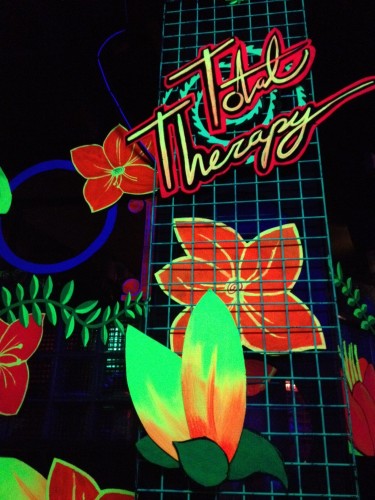

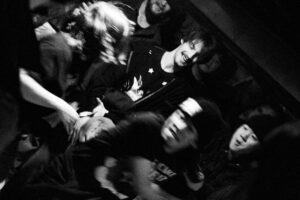
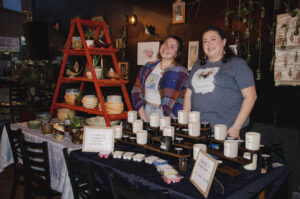


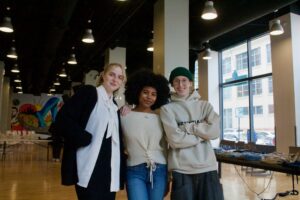

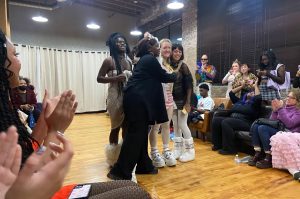

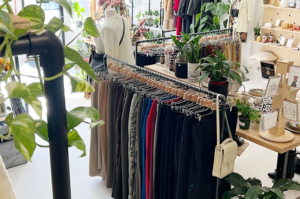

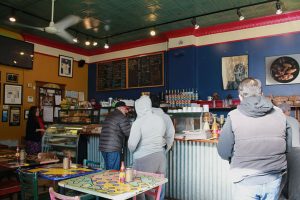







Be First to Comment